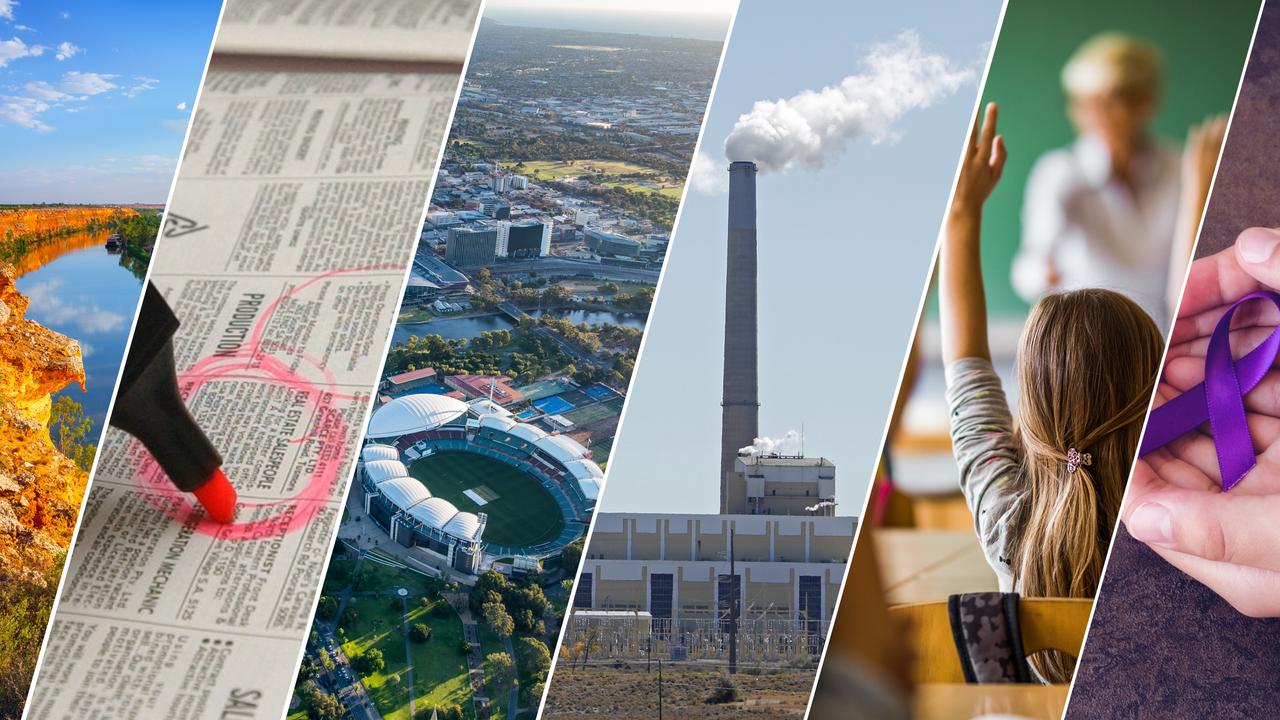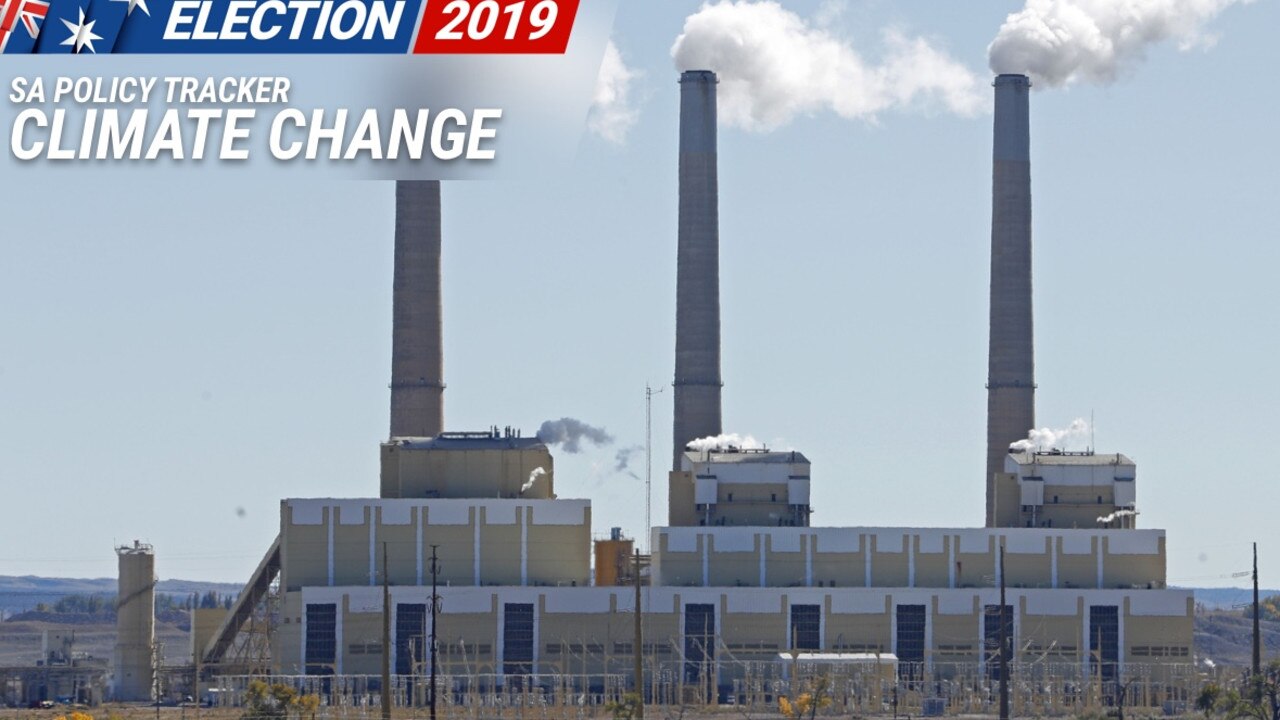Federal Election 2019: Where the parties stand on power prices
The Advertiser’s 2019 South Australian Federal Election Policy Tracker is putting the policies, not the politicians, first. Find out what the major stakeholders are saying, and where the major parties stand, on power prices

SA Policy Tracker
Don't miss out on the headlines from SA Policy Tracker. Followed categories will be added to My News.
Power prices are consistently cited as one of the biggest issues South Australians face in the struggle to balance their household budgets.
The state has the highest household electricity bills in the country, with people spending an average $1900 a year just to keep the lights on.
The 2018 Sunday Mail Your Say SA survey found power supply and prices were the most significant issues facing the state - cited by six out of ten people.
After becoming the laughing stock of the nation, after a statewide blackout in September 2016, the state’s energy reliability has been stable.
A report by the Australian Energy Market Commission, released in December, found South Australian households were likely to save $120 in total (a decrease of 6.5 per cent) on their electricity bills from FY19 to FY21 as lower wholesale costs from increasing renewables capacity flow through to consumers. After a relatively small fall of almost two per cent this year (from FY18 to FY19), prices are estimated to fall by an average 3.3 per cent annually over the next two years.
WHAT THE STAKEHOLDERS SAY
Australian Energy Council chief executive Sarah McNamara
Ms McNamara welcomed Labor’s commitment to the National Energy Guarantee, which she said “correctly identifies stable policy as the key to greater investment and lower prices for Australian households and businesses”.
Climate Council’s Head of Research, Dr Martin Rice
“Labor’s policies will boost the renewables sector and are significantly better than the Coalition’s when it comes to addressing climate change”.
WHAT THE PARTIES SAY
COALITION
The Morrison Government’s plan for lower power prices is delivering results.
From January 1, 2018, over half a million Australian families and small businesses have benefited from lower prices of up to 15 per cent including by around $272 on average annually for SA households.
Our Fair Deal on Energy plan includes ‘big stick’ legislation to crack down on the dodgy practices by the big energy companies.
It includes new offences and tougher penalties for ripping off customers, a price safety net to protect customers and reduce confusion, investment in reliable generation to encourage more competition in the market, and requiring energy companies to guarantee energy to meet demand.
A $285m cash handout for pensioners, low-income earners, and Newstart recipients to help pay energy bills, with a one-off payment of $75 for singles and $125 for couples was included in the Budget along with a new $50.4m fund to support work on up to 50 remote and regional energy projects.
A $2b fund to reduce carbon emissions by supporting transport, energy efficiency and vegetation management will also be created.
We’re committed to the Paris Agreement and our 2030 target (26-28% below 2005 levels) is responsible and significant: it will halve emissions per person.
We have already beaten our Kyoto Target by 367m tonnes and are well on our way to meeting and beating our 2030 target. Our policies are working - Emissions Reduction Fund and its safeguard mechanism, the Renewable Energy Target, the Clean Energy Finance Corporation, ARENA, Snowy hydro, energy efficiency measures and a target to plant one billion trees.
UPDATE:
A promise to slash power costs by 25 per cent will launch Scott Morrison’s final campaign week in his bid to appeal to voters’ hip pockets.
The Prime Minister will commit a re-elected Coalition government to an electricity “price target” in the belief undecided voters will respond to assertive action on the fractious issue.
Energy Minister Angus Taylor will vow to reduce the spot price in the national electricity market to less than $70/ MWh by the end of 2021.
The announcement of the firm commitment, on which a re-elected Coalition government would be measured, sets up a showdown on power prices and aims to shift the debate away from climate policy in the final week of the campaign.
LABOR
Labor has a plan to deliver cheaper, cleaner power for South Australians by
■ Implementing a 50 per cent renewable energy by 2030
■ Doubling the investments in the Clean Energy Finance Corporation
■ Target of one million new household batteries
■ Investing in renewables projects for renters and social housing
■ Ending the privatisation mess
■ Stopping incentives to privatise state electricity assets
■ Stop overcharging by power companies
■ Price caps to stop overcharging and scrapping outdated deals
■ Gas export controls to keep power prices down
■ Work with Australia’s transport sector to cut vehicle emissions, and boost adoption of electric vehicles
Labor will deliver 50 per cent renewable energy by 2030, 45 per cent cut in pollution by 2030, and net zero emissions by 2050.
Our commitment to renewable energy is backed by a $10 billion injection of additional capital into the Clean Energy Finance Corporation, and a new $5 billion Energy Security and Modernisation Fund, to drive a strategic investment program in new generation and energy networks.
Our energy plan will
■ Invest in more renewable energy
■ End the power privatisation mess
■ Stop over charging by power companies
Labor will reduce pollution from the biggest industrial polluters by extending the existing pollution cap implemented by Malcolm Turnbull – the safeguard mechanism – as well as introducing measures including:
■ Businesses will be able to earn credits for overachievement of pollution reduction
■ Emissions intensive trade exposed industries (EITEs) will be supported to keep Australian businesses competitive
■ A well-functioning offset market and reinvigorate the land offset market.
GREENS
The Greens will establish a new, publicly owned competitor to the private power companies, dedicated solely to driving down your costs instead of driving up its profits. Under our plan, energy bills will be reduced by an estimated $200 a year for an average customer. We’ll increase competition in the existing retail market and end the profit-at-all-costs business model. By purchasing energy only from renewable sources, this model will fast-track investment in renewable technology, create more public sector jobs and help tackle climate change.
CENTRE ALLIANCE
Centre Alliance believes Australian energy resources should be available to Australians before being available for sale to the rest of the world. End the gold-plating of electricity assets.
Centre Alliance also believes price increases for utility costs should be capped at CPI.
Centre Alliance supports the use of divestiture powers that would allow a court to order the breakup of companies found guilty of abusing their market power. We would also support all means to encourage greater take-up of home solar and battery storage, which will be critical when use of electric vehicles increases.
AUSTRALIAN CONSERVATIVES
The Australian Conservatives will remove government intervention in the energy market and open up the opportunity for new, baseload energy providers to enter. We will remove the moratorium on nuclear power and stop retailers & generators gaming the trading system.
THE ADVERTISER SAYS
The Coalition has been a little all over the place on its energy policy with a promised ‘big stick’ legislation now being taken to the election. This is despite senior SA Liberal Christopher Pyne earlier in the year declaring it one of the government’s most important legislative priorities for the first sitting weeks of 2019.
For many commentators the ‘big stick’ approach, which would give the government the power to break up energy firms they thought were charging consumers too much, was never going to work. Energy policy has been an ongoing source of pain for the Coalition.
Pro-coal Queensland MPs actively pursuing the Adani Project and gaining the party’s overall approval, which the more moderate southern state MPs fear could be political poison.
Under former Prime Minister Malcolm Turnbull, the Coalition took the clear position that the most cost-effective approach on energy was renewables, combined with storage; hence the government’s strong investment in schemes in the Snowy Mountains, Tasmania and SA.
However, Labor’s enthusiasm for renewable energy will still be seen by some in the community as the reason why their power bills have gone up, and recent missteps on the electric car debate haven’t helped.
Despite general agreement among both major parties that more, not less, renewables is the way of the future, key questions also remain as to the long-term financial viability of key projects; the collapse of the $650m solar plant in Port Augusta due to a lack of financing came at the worst possible time for those wanting to expedite any changes
- Matt Smith, National Affairs Editor.



